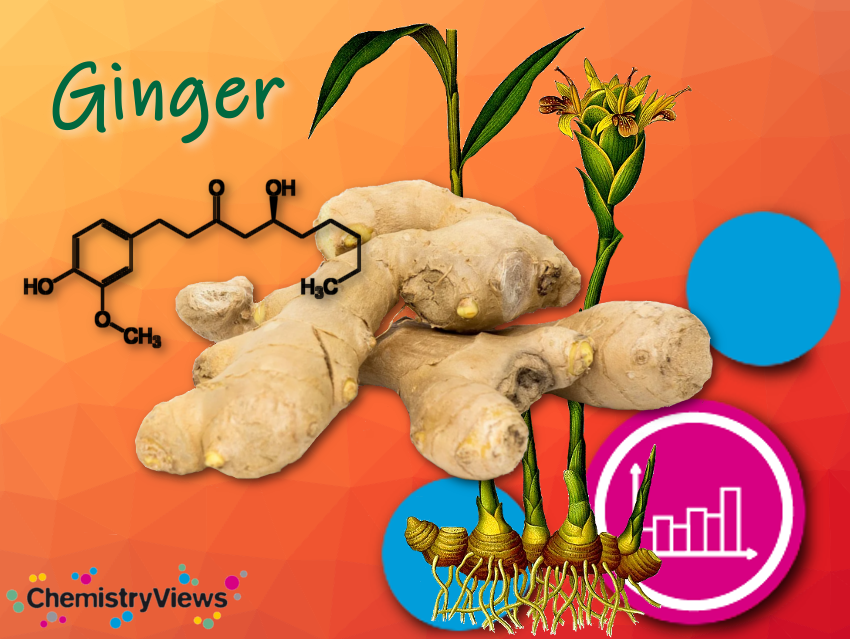Ginger is one of the earliest spices to be cultivated and exported. Ginger has an aromatic smell and tastes burning hot and spicy. It is used in a wide variety of foods, such as gingerbread, jams, rice pudding, fruit salads, soups, curries, chutneys, sauces, meat, fish, and in drinks like tea, ginger ale, and ginger beer.
Ginger has been popular as a medicinal plant in China and India for over 4000 years. In Europe, it first became popular in England. In Vienna, Austria, ginger cookies are one of the typical Christmas treats.
Ginger is said to have numerous health-promoting properties, including antibacterial, antioxidant, antiviral, analgesic, anticarcinogenic, antiemetic (protects against vomiting), blood-circulation-enhancing, fertility-promoting, and bile-producing properties.

.png)
References
- Handbuch der Lebensmittelchemie. Bd. 6. Alkaloidhaltige Genussmittel, Gewürze, Kochsalz (Eds: Josef Schormüller, Ludwig Acker, Karl Gustav Bergner, Springer 1970. ISBN-10: 364246226X
- Andy Brunning, The Chemistry of Ginger, Compoundchem 2014.
- William Cook, The Physiomedical Dispensatory, 1869. (Retrieved November 24, 2020)
- Eok-Cheon Kim, Jeong-Ki Min, Tae-Yoon Kim, Shin-Jeong Lee, Hyun-Ok Yangd, Sanghwa Hanb Young-Myeong Kime Young-Guen Kwon, [6]-Gingerol, a pungent ingredient of ginger, inhibits angiogenesis in vitro and in vivo, J Pharmacobiodyn. 1984, 7(11), 836-48. https://doi.org/10.1016/j.bbrc.2005.07.076
Also of Interest
- Chemistry Advent Calendar 2020
ChemistryViews 2020.
Daily highlights from the chemistry of spices




